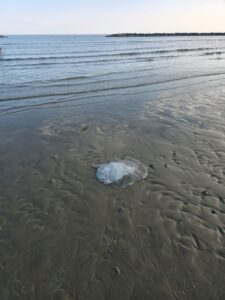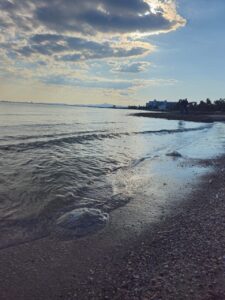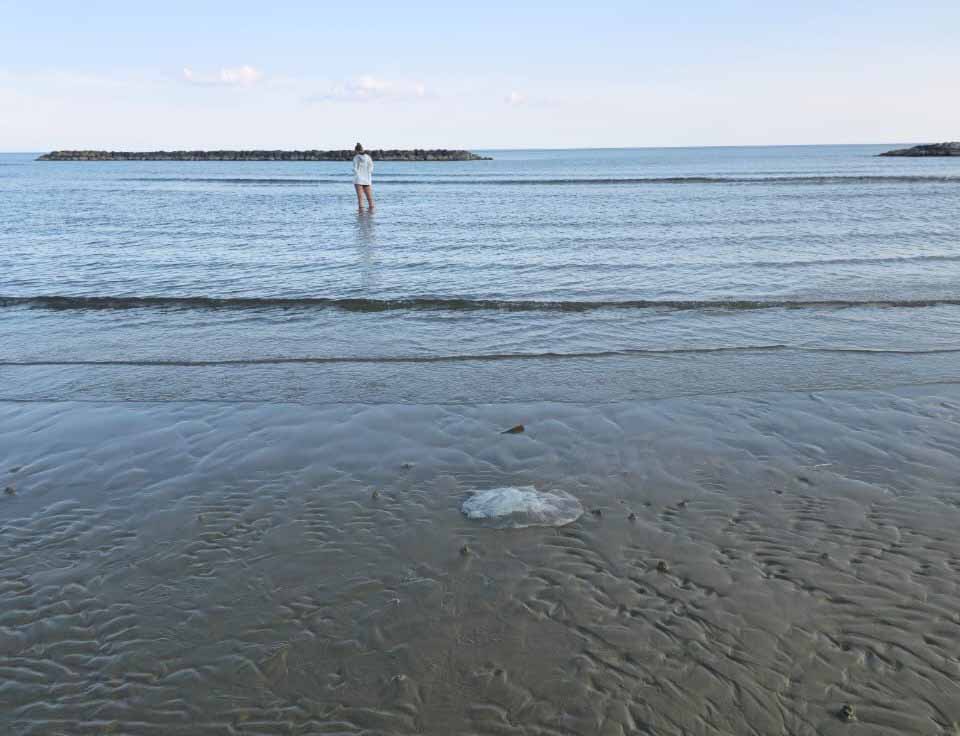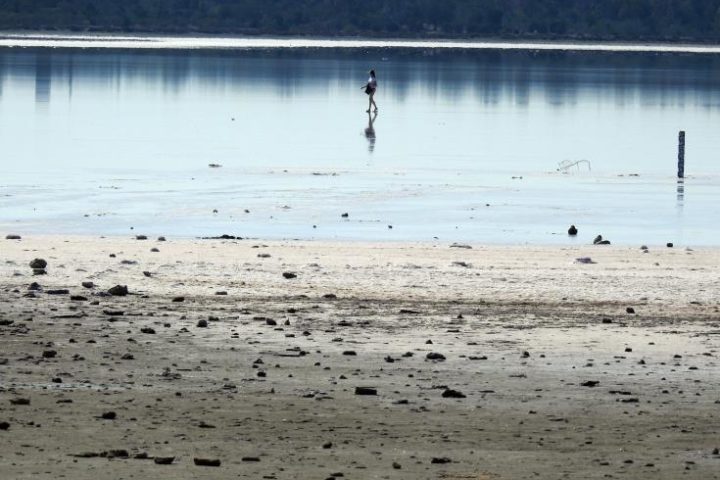Global warming pushes sightings closer to island’s shores
A recent surge in jellyfish sightings along the Cyprus coast is a cause for concern, despite creating a mesmerising spectacle, captivating onlookers and prompting insights into their increased presence, marine biologists argue.
Rapid climate change has turned the Mediterranean into a significant and precarious “hotspot,” imperiling its marine ecosystem as tropical jellyfish increasingly grace the shores of Cyprus, posing a threat to the island’s most precious asset, its sunny beaches.
Marine experts are raising alarm about the accelerated pace of climate change exacerbating longstanding environmental issues in the Mediterranean basin, driven by a combination of shifts in land use, escalating pollution, and altering biodiversity.
Cypriot marine biologist Antonis Petrou, of AP Marine Environmental Consultancy Ltd, highlighted that temperatures in the Mediterranean region have surged by over 1.5°C since the pre-industrial era, surpassing the global average by 0.5°C.
Consequently, sea levels have risen by 6 cm, and seawater acidity has increased significantly, providing an ideal environment for the introduction of invasive tropical marine species from the Red Sea and the Indian Ocean.
With climate models predicting further temperature increases and rainfall regime changes in the Mediterranean, Petrou warned of more challenges ahead.
 “Changing weather patterns, including eastward winds previously uncommon in Cyprus, are pushing jellyfish out of the Red Sea and westward, leading to frequent sightings in Famagusta and Larnaca,” he said.
“Changing weather patterns, including eastward winds previously uncommon in Cyprus, are pushing jellyfish out of the Red Sea and westward, leading to frequent sightings in Famagusta and Larnaca,” he said.
But it is not only jellyfish the marine biologists are worried about.
“Assisted by rising sea levels and lured by the warmer Mediterranean waters, toxic tropical species such as Lionfish and silver-cheeked toadfish have invaded the region, multiplying to alarming numbers,” Petrou stated.
These pose severe risks to both humans and native species, displacing endemic species westward, as he explained.
Despite covering a small fraction of the world’s oceans, the Mediterranean hosts an exceptionally rich and diverse biota, housing approximately 17,000 species, representing 4-18% of global marine biodiversity.
“The eastern Mediterranean has witnessed a decline in biodiversity due to the incursion of tropical fish from the Suez Canal, aided by the recent canal widening and rising sea levels,” Petrou explained.
Suez expansion
The expansion of the Suez Canal by Egypt, deepening the main waterway and providing a parallel 35km channel, aims to boost canal traffic. However, it is considered a primary pathway for introducing non-indigenous marine species into the Mediterranean, facilitating the entry of invasive species from the Red Sea and the Indo-Pacific Ocean.
Petrou emphasised the dangers posed by these invasive species, such as the highly poisonous silver-cheeked toadfish and venomous Lionfish. Their introduction and spread represent an additional stress factor to the Mediterranean marine life already grappling with climatic abnormalities.
The introduction of invasive species not only threatens the biodiversity of the Mediterranean basin but also poses economic risks to countries reliant on fishing and tourism.
“Firstly, fishing is significantly affected by endemic fish being pushed westwards by invasive, toxic species, which cannot be fished for consumption by humans,” said Petrou.
He explained that the species in question are also attacking fishermen’s nets eating away smaller species such as squid and octopus.
 “These fish are particularly harmful to humans, which could have an immediate effect on tourism, as they pose a threat to swimmers. Frequent visits from jellyfish could destroy tourism in an area.”
“These fish are particularly harmful to humans, which could have an immediate effect on tourism, as they pose a threat to swimmers. Frequent visits from jellyfish could destroy tourism in an area.”
“Unfortunately, there is not much Cyprus can do, as this is a global phenomenon caused by warming over which we have no control”.
Unfortunately, as a global phenomenon driven by climate change, Petrou acknowledged the limited control Cyprus has over the situation.
However, he urged governmental action to mitigate its impacts and safeguard the Mediterranean ecosystem and economies, suggesting measures such as incentivising fishing of invasive species and collaborating with Egypt to prevent their influx through the Suez Canal.
In comments to Kathimerini, Dr. Yianna Samuel, a Cyprus Fisheries Department official and marine biologist, said that jellyfish sightings have been reported along the eastern and southern coasts of Cyprus.
The majority of sightings have been reported in the regions of Protaras and Paralimni, extending up to the area of the Vasiliko power plant.
“Cyprus sees a variety of jellyfish species visiting its waters, but recent reports have been monopolised by the nomad jellyfish (Rhopilema nomadica),” confirmed Dr. Samuel.
Painful stings
As she explained, this species, a relatively large jellyfish common to our region, is notorious for its painful stings to humans, ranging from mild irritation to a sensation of stinging, burning, itching, and pain, often accompanied by swelling.
Symptoms can vary in severity and duration, lasting several weeks in severe cases.
Describing the physical characteristics of the nomad jellyfish, Samuel explained that it possesses a hemispherical-shaped body (umbrella) with a diameter that can extend up to 1 metre.
It has eight thick tentacles originating from the central point of the body, each bearing millions of nematocysts. Upon contact with a foreign body, these nematocysts release microscopic “darts” carrying venom. The colouration of the nomad jellyfish is typically milky to ice blue.
The official further noted that this particular species is endemic to the Red Sea and initially invaded the Mediterranean through the Suez Canal in the 1970s. Since then, population surges in the species have been observed, particularly since the 1980s.
Explaining the movement of jellyfish, Dr. Samuel highlighted that they are transported by waves and currents.
“Consequently, with changes in season and temperatures, they tend to migrate closer to the shores. These jellyfish can linger in the area for several days up to 1-2 months, depending on various factors,” she noted.
What to do if stung by a jellyfish
According to a Fisheries Department announcement, in the event you encounter a jellyfish, remain calm and move away.
Avoid touching jellyfish washed ashore, as their tentacles could still cause irritation if touched.
Individuals with an allergy history could suffer more severe symptoms.
If you are allergic and come into contact with a jellyfish, immediately contact your doctor or go to the hospital.
If someone is not severely allergic, they should:
- Immobilise the affected area to prevent further spreading of the tentacles.
- Remove the tentacles or any remnants with the use of a plastic card, a piece of wood, or tweezers. NEVER use your bare hands, as this will lead to tentacle adhesion and transfer of irritation.
- Carefully rinse with seawater or vinegar, without rubbing the affected area. DO NOT use fresh water.
- AVOID improvised treatments such as washing the area with fresh water or alcohol, applying pressure or covering the wound with bandages, using creams or antihistamines without medical advice.
- If pain and discomfort persist, consult a doctor.
- In the case of an allergic individual, they must contact/go to a doctor or hospital immediately.









